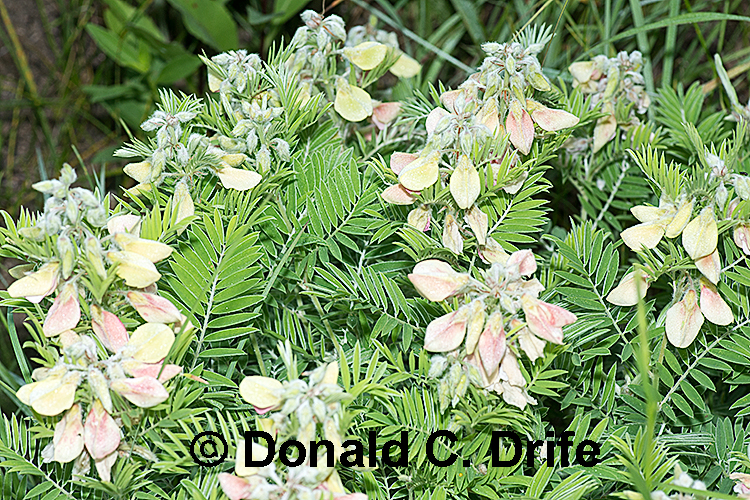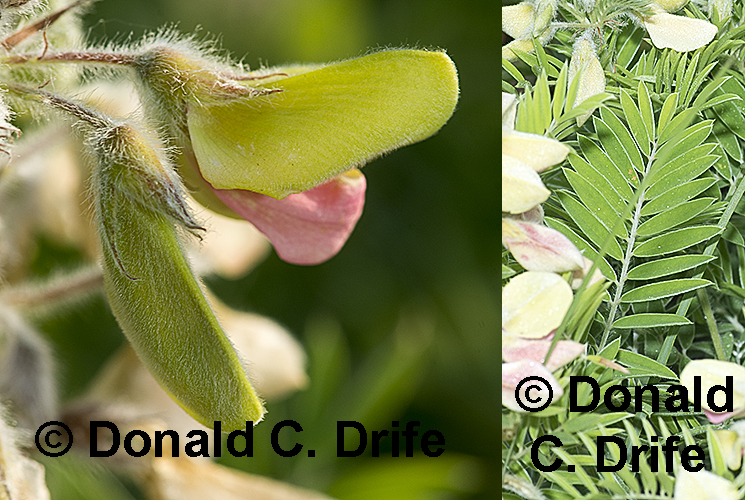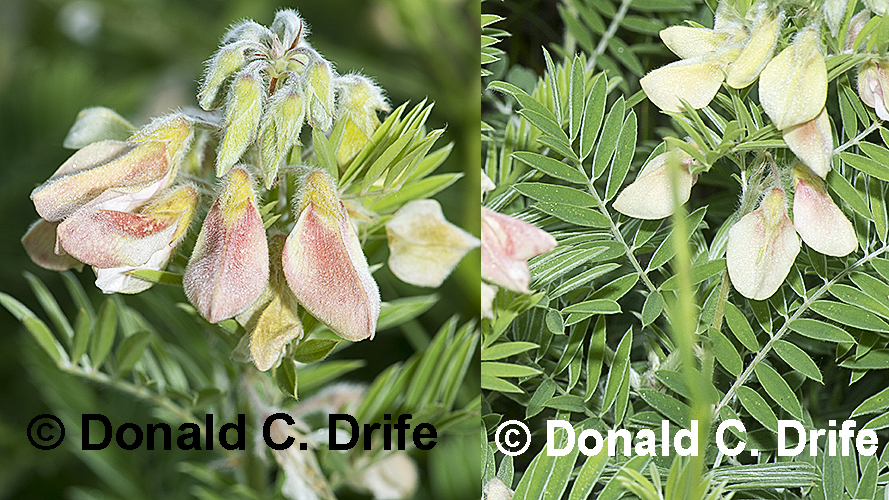On the Fourth of July I visited Indian Springs Metro Park. I found a plant in flower that I didn’t know. It was obviously in the pea family so I looked at the Michigan flora website and the dichotomous key to the pea family (Fabaceae). A dichotomous key is simply a series of paired statements: you read both statements and follow the statement that matches your plant.
Starting with couplet #1 I follow the lead for a plant with compound leaves, that takes me to couplet 3. My unknown plant has twenty-one leaflets, that leads to couplet 27. My plant is an herb not a woody plant, that leads to couplet 33. Its leaves are once-pinnately compound so we follow couplet 36. Our unknown has an odd number of leaflets so we follow couplet 44. Our leaflets are wider than 3mm that takes us to couplet 45. Inflorescence a simple spike or raceme leads to couplet 48. Its stem is not vine-like couplet 49. The flowers are bicolor so the key leads us to the genus Tephrosia. This genus, in Michigan, has only a single species Goat’s Rue or Rabbit-pea (Tephrosia virginiana). I check the images on the site and they match my plant.
It takes some practice to master a botanical key. You need to learn a vocabulary. Words such as: leaflet, raceme, inflorescence are all descriptive of plant parts. I still look up words in the glossary or a dictionary from time to time. The keys on the Michigan Flora website are excellent and work well. There is also a key to families.
Richard Rabler’s Plants of Michigan has simple keys and can be used as a stepping stone to more technical works. It has few illustrations but covers a large number of species, including grasses, sedges, and woody plants. When I started learning to use a key I would identify plants that I already knew just to get a feel for how the key worked.
Newcomb’s Wildflower Guide is a great beginner’s guide. Inside the front cover is the start of a simple key. You look at three aspects of the plant: flower type, plant type, and leaf type. A three digit number is created from this information. I use Newcomb’s if I don’t know which family the unknown belongs to. Our plant has irregular flowers, alternate leaves, and divided leaves. This gives us the group number 134. In the locator key under group 134 is a series of statements. Our plant has more than four leaflets that leads us to page 66. From the description and drawings on page 66 we reach Goat’s Rue. Newcomb’s key is simple, it has drawings of flower and leaf type and a glossary. Most of the species are illustrated with line drawings. It has fewer species than Michigan Flora or Plants of Michigan but includes most of Michigan’s showier species. The scientific names are old but a PDF document updates them.
Field guides arranged by flower color are not the best method to identify plants. Using Goat’s Rue as an example the flower is both yellow and pink. Some plants change flower color as they age. Albino and other color forms also occur.
Plant photos can be posted on the Michigan Botanical Society Facebook page and someone usually identifies them. Post where and when the photo was taken.
I encourage you to try to identify your own unknowns. I find that I remember a species better if I made the effort to identify it.
Copyright 2018 by Donald Drife
Webpage Michigan Nature Guy
Follow MichiganNatureGuy on Facebook



